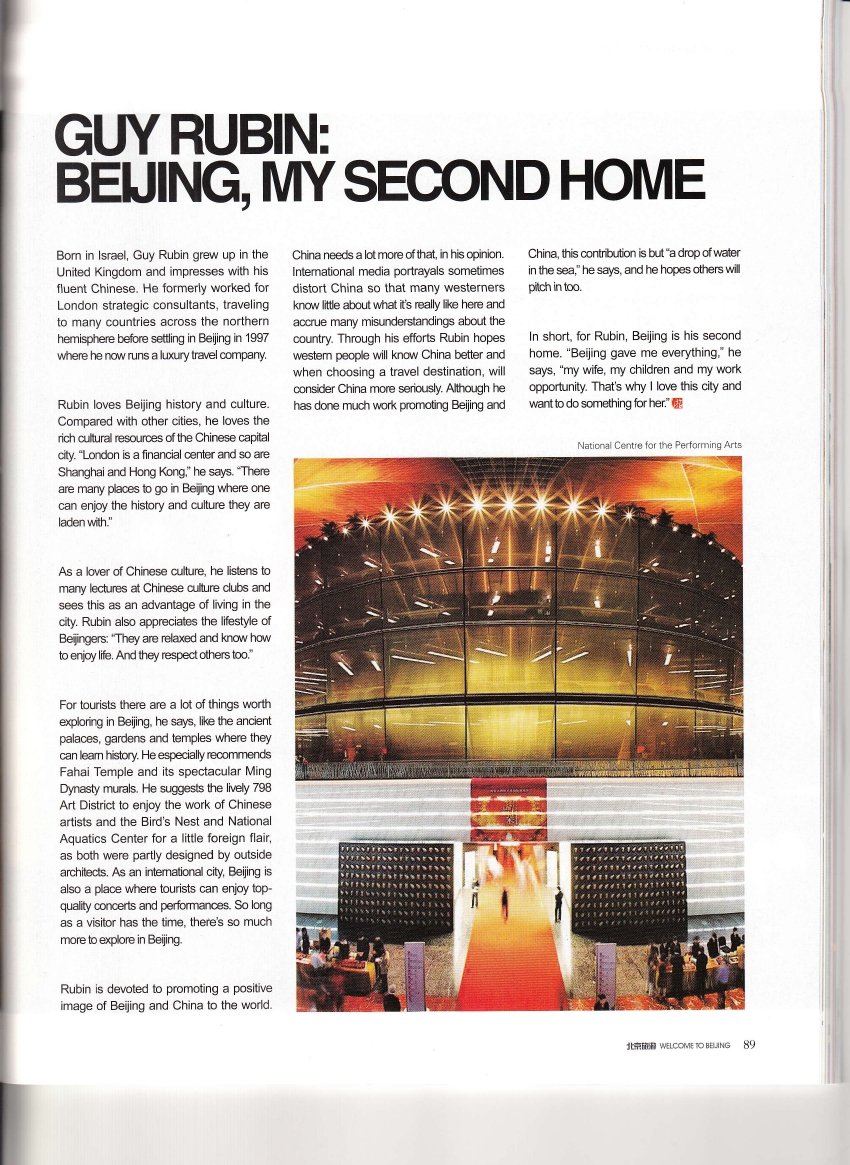The reopening of international travel to China in March 2023 has introduced visitors to changes in rules for accessing Tiananmen Square and for buying tickets to the Forbidden City in Beijing. If you are working without the help of a luxury tour operator such as Imperial Tours, which can organize these tickets as part of an custom package, but want to organize these activities for yourself, the instructions below detail how to do it.
To Access Tiananmen Square (Without Visiting The Forbidden City)
As of 2021, travelers must make a reservation to Tiananmen Square at a particular time to access it. The most convenient way to organize this is to download the Wechat app and look in the search bar for a mini-app called “天安门广场预约参观”. Unfortunately, an English language version is not yet available. Double-click on the mini-app to open it and then click on “个人预约” which means “Individual Ticket Ordering”. The next screen in Chinese provides dates for entry. Once you have selected a suitable day, the next screen offers four choices: 升旗 (flag raising for which you should arrive before dawn), 上午 (morning), 下午 (afternoon), and 降旗 (flag lowering in the evening). The following screen asks for the personal information of every visitor including the surname (姓名), type of identity document (证件类型), for which your answer should be passport (护照), passport number (证件号码) and mobile phone number (手机号码). Please note that families with children under 6 years of age or less than 1.2 meters (47 inches) in height should request children (儿童). Once you complete this information for all the passengers, you will arrive at a screen with a reservation number detailing your visit time along with your total adult and children tickets.
Now that you have reserved a time to visit, you should proceed to one of the entry points to Tiananmen Square at the reserved time, remembering to take your passports with you. There will be a line for the security inspection prior to accessing the square where your passport will be confirmed against the reservation system, you will be asked to pass through a metal detector scan and any bags you have with you will be examined. If it is a hot day, please remember to take a bottle of water!
To Purchase Tickets For The Forbidden City And Tiananmen Square
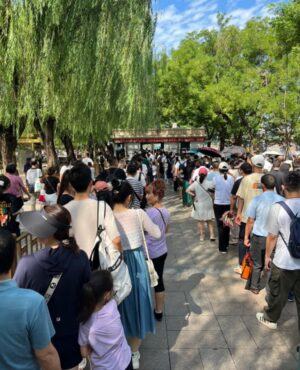
The process for purchasing tickets for the Forbidden City has also become more onerous. Imperial Tours can simplify this for you greatly taking care of all the admin and also reducing the time you will have to queue at the site to collect your tickets prior to queuing to access the site. Should you wish to do this for yourself, you can easily reserve tickets up to 6 days in advance at the English language website. On this website, you select the time for your visit, along with the number of visitors and enter the passport information for each of the visitors. The website charges a US$3 per ticket booking fee and gives you the right to queue up and purchase tickets at 60RMB per ticket before your visit.
It makes sense to arrive at the Forbidden City in good time for your visiting slot as you will need to find your way to the ticket office on the west side of Wumen or Meridian Gate. Once there, you will find there is a queue of 10 – 50 minutes to get to the ticket window, where you can purchase your tickets at 60RMB per ticket. Once you have bought your tickets, you should advance to the queue for entry for individual ticket holders. Fortunately, this is a much quicker queue and you will only need to wait here for about 5 – 20 minutes in order to get into the Forbidden City and start your visit. Note that once you get your reservation to purchase tickets for the Forbidden City, you can automatically use the same reservation to gain access to Tiananmen Square at the same time so long as you are not visiting the flag raising or lowering ceremony – these require a separate application, as described above.
Should you wish to use the services of Imperial Tours to develop a tailored luxury tour package, you will find that you will access both Tiananmen Square and the Forbidden City with shorter or no queue times and far less hassle.
Last year I received an unexpected call from the son of clients I took around China over 10 years ago, when I started working with Imperial Tours as a China Host. Their son Josh had just got married and was transiting via Shanghai with his fiancée on en-roue to their honeymoon in Thailand. Back then, I had spent 14 days traveling with their family as a personal concierge, coordinating all activities and logistics, acting as a cultural bridge and making sure it all went smoothly.
Josh explained that he would like to spend some time in Shanghai because his fiancée loves architecture and art, and he remembered Imperial Tours arranged a private lecture on colonial architecture that blew his father´s mind. I told Josh that many art museums, galleries have opened in Shanghai in the last few years, including the Yuz Museum, the West Bund Museum, Power Station of Art, etc… and that our Contemporary Art Expert could take them around and include some private studio visits if they wish.
“How about you spend a couple of nights in Hangzhou, Josh? You did not go there with your parents last time. It takes 2.5 hours by car and about the same by high-speed train once you account for transfers to/from the train station. Hangzhou is famous for its UNESCO listed West Lake, Longjing tea fields, Buddhist temples, and is is a perfect break from the bustling city. You can either stay at the Four Seasons or the Aman Fayun; our two recommended luxury options. It is the perfect destination for honeymooners: you´ll start the day with a serene taichi lesson, and then board a private gondola to tour the romantic West lake, enjoying the full breadth of Hangzhou’s delightful vista while you sip a flute of champagne”
And I had some good news for Josh: they´d be able to tour Shanghai and Hangzhou without a Tourist visa as they qualified for the Transit Without Visa arrangement.
Let me summarize the different visa options you have when visiting China.
Yes. For most foreign nationals, a Tourist Visa is required to enter Mainland China (see below for those who visit the Special Administrative Regions of Hong Kong or Macau only). It would be preferable to apply 1-2 months before your travel date, although express options are available if in a rush. Some nationals may apply for a 10 year China visa, which would allow multiple short stays of up to 3 months for tourist or business purposes. The duration for each stay can vary from 30–120 days depending on your nationality and purpose of travel. As of writing, the 10 year multiple entry Chinese visa is applicable to citizens from the USA, Canada, UK, and Argentina.
For your visa application, we recommend going through a visa agency such as Passport Visa Express for Americans (Imperial Tours clients are eligible for a $10 discount; other agency options are available too). All needed documents are listed online, including an invitation letter that your Imperial Tours Itinerary Designer will send you once the tour is confirmed (or alternatively, hotel confirmations covering your entire itinerary). Six working days are generally required to process the visa application.
If you are only spending a couple of days in China you might qualify for a transit visa waiver, available upon arrival at participating ports. These waivers allow eligible foreign travelers a visa-free visit for 24, 72, or 144 hours. Requirements for each waiver do differ but there is one common rule: the country you arrive from and depart to must be different. For instance, as with Josh, if you are flying from Los Angeles to Bangkok and transiting through Shanghai, then you may apply for a transit visa at the airport. When you pass through immigration, there will be a special line “Transit without visa”; you will need to present your passports and a copy of your onward ticket proving that you are not staying in China. For Josh and his fiancée, Imperial Tours had arranged a diplomatic Meet & Greet Airport Representative to meet them off the jet bridge and assist with the transit visa formalities – then escort through baggage claim & customs.
Not all Chinese cities offer transit visa waivers and some only allow for travel within the province, so rules do differ between cities. Also, not all foreign travelers are eligible for the waivers. For instance, Josh and his fiancée took advantage of a 144 hours transit visa – that is 6 days – they landed in Shanghai, visited Hangzhou for a couple of nights and traveled to their next destination, Bangkok. This would work within the rules (Shanghai and Hangzhou, although in separate provinces, are part of the same transit ‘zone’). On the other hand, they would not have been able to travel on to Beijing or Xi´an because those are in different zones. In their case, the 144 hours started from 00:00 or midnight on the day following their arrival, so if you arrive at 6am, it actually gives you closer to 162 hours in the country.
You are suggested to check the most up to date details with Chinese embassies / consulates abroad, or consult with a visa agency. While we at Imperial Tours are happy to share details about the different transit visa options, we are not visa specialists.
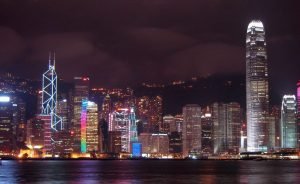
A Chinese visa is not needed by most visitors to enter Hong Kong. For citizens of Canada, Australia, USA or the European Union, you will be able to stay in Hong Kong for up to 90 days (180 days for British citizens). You are advised to check the full list at the Hong Kong Immigration Website.
If you plan to visit Mainland China after your stay in Hong Kong, you need to apply for a Chinese visa. It is possible to get a Chinese visa in Hong Kong; in general, it takes 4 working days to get the visa, either through the official China Visa Application Service Center (CVASC) or through a Hong Kong based agency such as the China Travel Service. Note that it is no longer possible to apply directly through the Ministry of Foreign Affairs office in Hong Kong.
Entry to Macau is similarly visa free for most foreign nationals, but you are advised to check the official list on the city’s Corpo de Polícia de Segurança Pública site. To apply for a Mainland Chinese visa from within Macau, you may do so through a local agency (recommended), or the Ministry of Foreign Affairs (FMCOPRC) office there.
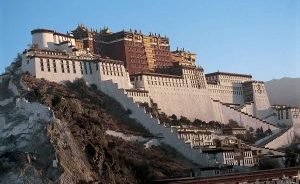
As you might know, travelers visiting Lhasa require a special permit. The Tibet permit is not related to the China Tourist visa that you must still apply for; it is an internal travel document that Imperial Tours will organize for you, for which we will require clear copies of your passports and visas a month prior to tour departure.
Note that if you are entering Tibet from Nepal then the procedure is different. You will be required to apply for a Chinese Group Visa through the Chinese Embassy in Kathmandu. Since individual application to the embassy is not permitted, tourists will need to entrust a local travel agency to apply for that group visa. This process generally takes 3 working days. With this one exception, there is need to apply for a Chinese tourist visa beforehand (in fact, any visa you may have will become invalidated) and no need for a Tibet permit.
Note that Tibetan travel policies may change without notice. If you plan on visiting the region, one of our dedicated Itinerary Designers would be happy to discuss options with you.
Experience the great outdoors of China. Breathe in the crisp clean air and stand in awe over her beauty. While we guarantee your China experience will be one of culture, cuisine, and wonderment, it can also be filled with breath taking scenery and dramatic landscapes. China’s natural landscapes offer experiences for all types of travelers. To help showcase some of China’s outdoor experiences we have compiled in this article the best natural destinations.
So when packing your bags, be sure to include some comfortable shoes, hydration gear, and of course – a camera.
The Great Wall of China
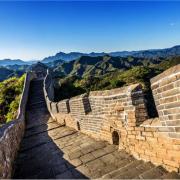
One of the many views on the Great Wall
We have all heard of it, with its impressive 20,000km length, The Great Wall of China is one of the most monumental manmade structures in the world. Built throughout different dynasties, beginning in the 3rd century B.C, the Great Wall was originally built to prevent an invasion from barbarian nomads. Today, the Great Wall of China is one of the most visited attractions in the world. And for nature lovers hoping for a remarkable and less touristic hike, you will be happy to know that the Great Wall has many sections that have been left virtually untouched and tourist free. These ‘off the beaten trail’ areas provide picture perfect wild sceneries, where more adventurous travelers can enjoy breathtaking views of the Great Wall surrounded by nature.
Biking & Hiking in Huangshan
In the Southern area of Anhui Province, just three hours by high-speed train from Shanghai, you will discover the Huangshan Mountain range. The Huangshan Mountain range, featured in the blockbuster movie Avatar, is also frequently referred to as the Yellow Mountains. Huangshan is classified as a UNESCO World Heritage Site famous for its beautiful scenery, breath taking sunrises and sunsets, and of course the almost magical sea of clouds that sweep throughout the mountains. With more than 50km of footpaths and trails, as well as cable cars to help ease tired legs, you can spend the day hiking the various trails and viewing the dramatic scenery. After your day on the mountain, ease your tired legs at the beautiful Banyan Tree located just off the mountain.
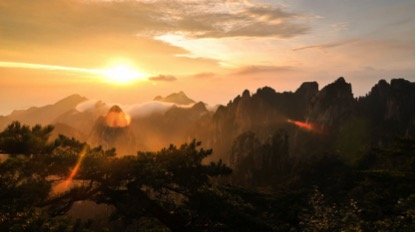
Sunrise from above the clouds in the Yellow Mountains
After your night of relaxation, spend the next day discovering the Ancient Villages of Hongcun and Xidan. Both villages have long history and splendid Anhui Culture as they remain untouched since they were built in the 14th century. Be transported to another era walking through the unique alleyways and ancient buildings, all the while being wrapped in the delicate aroma of hand picked local tea and fresh flowers.
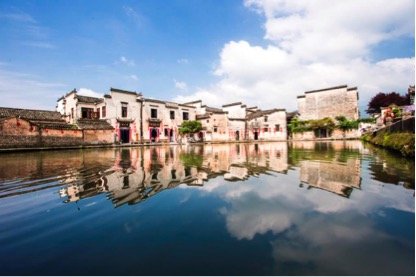
View of the Ancient Village of Hongcun
Guilin & Beyond
Located in the South of China, consider Guilin as your jumping off point to experience some of China’s most beautiful natural environments. There are many unique scenic places located only 2 hours or less from Guilin. However, two of the most beautiful locations, ones that will leave you speechless, are Longsheng and Li River.
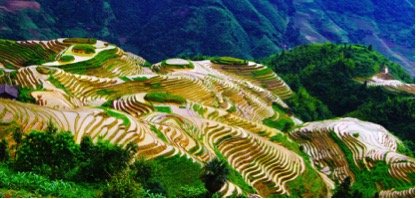
Long Ji Rice Terraced fields
In Longsheng you will find the iconic Long Ji (Dragon’s Backbone) Rice Terraces fields. Featuring more than 66 square km of terraced fields, within mountains 800m above the sea level. If you’re wondering when to visit, the best time of the year to visit the Longsheng fields is May, when irrigation starts, and the fields are filled with water reflecting the image of the sky, creating a unique effect.
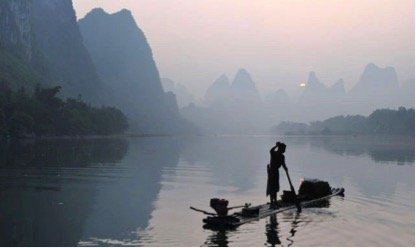
Fisherman on the misty Li River
During your adventure in the Guilin area, you can also experience sailing on the Li River. As you cruise along the river banks you will discover the dramatic landscape of the Li River with its green hills, clear water, peculiar stones, caves, and famous mist that give the river its iconic look.
Hike to Ganden Monastery in Lhasa, Tibet
Only 40km away from the capital city of Tibet, Lhasa, settled on the top of a 4200m-altitude mountain, you will discover Ganden Monastery. In addition to being one of the largest monasteries in Tibet, Ganden Monastery is also one of the 3 Great Temples along with the Sera Monastery, and Drepung Monastery. However, Ganden Monastery is the only monastery of the 3 where you can take inside photos, for a reasonable fee. Despite the beauty of the Monastery, the must-do highlight is to hike around the Monastery. The kora, or holy pilgrimage route around the Ganden monastery, is truly one of the most magical and inspiring places in the world. Not only are the views breathtaking, the experience of prostrating pilgrims and monks walking along with you, is something we cannot begin to put into words.
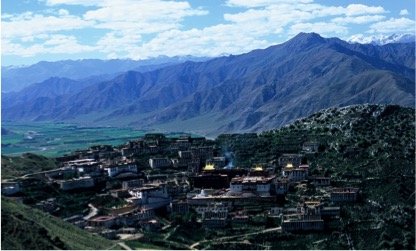
Lhasa Valley & Ganden Monastery
Shangri-La
Formerly known as Zhongdian city, Shangri-La is one of the most beautiful places in China. Described as a mystical and harmonious earthly paradise by British novelist James Hilton, in his 1939 “Lost Horizon” novel, Shangri-la is truly a place of wonderment. Located at the meeting point of the Tibet, Yunnan, and Sichuan provinces, Shangri-La has an eclectic mix of ethnic groups, but is mostly inhabited by Tibetans. Its isolated location 3,000m above the sea level, offers travelers the opportunity to discover and learn from the Tibetan culture and lifestyle, while experiencing the vast natural landscapes of China. Shangri-La is a city surrounded with culture, history, and natural wonders. For the nature loving traveller, Shangri-La is a must.
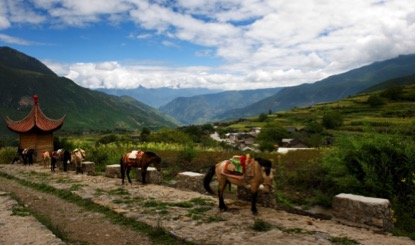
Experience the vast nature of Shangri-La
Hong Kong
While the image of Hong Kong may bring skyscrapers and crowded streets to your mind, what you may not know is that three quarters of Hong Kong’s landscape is countryside and 40% of its territory is protected for nature conservation. So after experiencing one of the most exciting metropolises in the world, escape the streets of Hong Kong and head outside to experience great hikes and outdoor activities for travelers and locals alike.
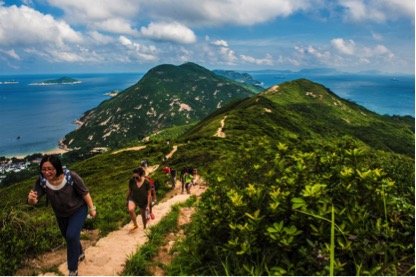
Hiking the Dragon’s Back Trail in Hong Kong
One of the best and most popular hikes in Hong Kong is the 8.5km-long hike along the Dragon’s Back ridge. The name of the ridge comes from the dragon like shape of the path that connects Wan Cham Shan hill and Shek O peak. Gentle slopes will guide you along the trail while you enjoy unbeatable views of the South China Sea and the coastal buildings of Hong Kong Island. When you reach the end of your trek, relax in the sandy and blue sea beaches in Shek O village or Big Wave Bay.
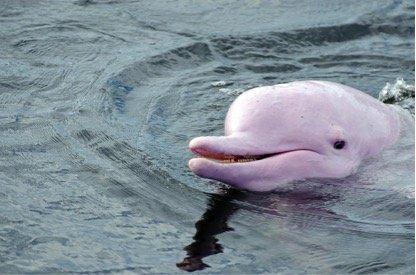
Chinese Pink Dolphin in the waters of Hong Kong
Finally, a must do on your visit to Hong Kong, is to see the famous Pink Dolphins. These unique dolphins are a subspecies of Indo-Pacific dolphins that only appears along the Chinese coast. Their unique pigmentation comes from blood vessels close to the surface of their skin. Unfortunately, as a result of loss of habitation, they are classified as endangered. However, they are always happy to receive and show off for visitors, which incidentally make for amazing photo opportunities. To see them in their natural environment, join a day tour of dolphin watching and experience an unforgettable moment within these unique inhabitants in the waters of Hong Kong.
![]()
Scene from Avatar – the landscape was inspired by Zhangjiajie and Huangshan
By 2017 China’s film industry is expected to surpass the profits and influence of Hollywood. According to the LA Times, last year alone almost 15 movie screens per day were installed and ticket sales rose 35 percent. While both domestic and international films have made major waves in China, Americans are being equally exposed to Chinese influence.
US companies like Warner Bros are encouraging relations between Hollywood and China in the form of investment and for years have filmed a number of movies in China. Besides making millions, many of the films feature breathtaking Chinese landscapes and cities that inspire and add depth to the films’ stories.
China lends its beauty, culture, people and history to films that awe the world, and luckily, these places are far more than movie sets. We at Imperial Tours have researched the most popular movies filmed in China and compiled a Top 9 list of films shot in China. From lively cities and bustling Hutongs to stunning misty mountains, China offers as many, if not more, memories and adventures than any movie. Perhaps these films will inspire you to visit the Middle Kingdom:
1. “Avatar” – Although the amazing scenery in Avatar was actually created by computer-generated imagery (CGI) it still makes it into our number 1. One of the highest grossing films of all time is set in a lush environment where mountains emerge from the clouds and the lush green flora electrifies and gives life to the planet’s inhabitants. James Cameron, the movie’s director and producer, was inspired by China’s Zhangjiajie national park and Huangshan for the film’s location (both UNESCO World Heritage Sites).
2. “Skyfall” – Of the 24 James Bonds films in existence, three of them have been shot in Hong Kong and “Skyfall”, the second most recent venture, was shot in the action buzzing city of Shanghai.
3. “Crouching Tiger, Hidden Dragon” – In a battle of warriors and martial arts, this movie travels through Beijing, Xinjiang and the Huangshan area.
4. “The Last Emperor” – In order to document the life and memories of the last Emperor of China this movie was filmed solely in the Forbidden City of Beijing, the first production to be allowed inside.
5. “IP Man” – The third movie of this series was released on January 22, 2016 and features Mike Tyson. Many of the other movies where filmed throughout China but this third one focuses mainly on Shanghai and the great Master Ip of Wing Chun.
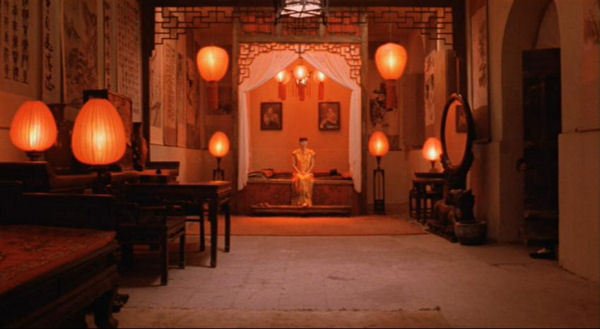
Scene from Raise the Red Lantern which was filmed at the Qiao Family Mansion in Pingyao
6. “Raise the Red Lantern” – A movie about the concubines of the wealthy Warlord Era of China, it is acclaimed for its use of color and stunning visual appeal, much like the ancient city of Pingyao near which it was filmed.
7. ”Her” – Based on the possible future advancements of AI (artificial intelligence), this movie was filmed in Shanghai.
8. ”The Karate Kid” – The 2010 remake of this classic movie was filmed at the Forbidden City, the Great Wall and the Wudang Mountains. Given that the movie featured Chinese martial arts, we at Imperial Tours wonder why it wasn’t renamed “The Kung Fu Kid.”
9. “Kill Bill” – Quentin Tarantino’s trilogy was filmed in Zhongwei and Beijing because Tarantino is such an admirer of traditional martial arts.
Watch these films and see if they don’t inspire you to visit China!
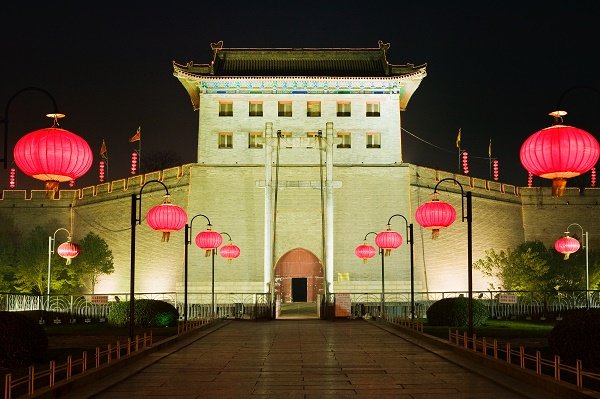
Red lanterns are ubiquitous during Chinese new year
In San Francisco red and gold lanterns are strung from lampposts, illuminating rainy days and lending hope for success in the New Year. Chinatown bakeries advertize the best moon cakes in the city, while shops along the main street stock up on poppers and other small fireworks. Wherever you live, Chinese festivals bring a certain sense of mysticism and excitement that have been carried with the culture for years. China has about 53 ethnic populations and under the Qin Dynasty (221-206 BC) these populations were united under one state, hence the beginning of official holidays and festivals. What makes Chinese festivals unlike any others in the world is not only the length of their history, but the adaptation of the festivals throughout China and across the world.
The most well-known festival, the one described above, is Chinese New Year and this year it took place February 7-13, with most of the large festivals being held on the 8th internationally. Enter colorful parades and temple fairs with fireworks, opera, music and more fireworks – all welcoming success as the New Year truly gets underway.
Hong Kong in particular prides itself on its New Year celebration where a finale of fireworks are displayed over the harbor and vermilion lanterns are hung all over the city, welcoming people into crowded temples to pray for good fortune and into festive markets that sell auspicious foods throughout the day.
Head northwest and celebrate the more demure and traditional Losar, or Tibetan New Year. The liveliest celebrations are in Lhasa where Tibetans journey from all over to celebrate the New Year and their spirituality by spinning prayer wheels, drinking yak butter tea, and setting off fireworks.
Moving through the year the next notable Chinese festival is the Lantern Festival on Feb. 22. Perhaps the most iconic Chinese festival, participants release paper lanterns lit with small lights or candles, into the sky or on water. The beauty of lights and colors easily burns into any memory. While there are at least four commonly believed origins of the festival, ranging from angered Gods to the changing of the seasons to a favorite advisor for an Emperor, none are confirmed. Besides tradition, a large part of Chinese festivals is the visual aesthetics, a culturally defining aspect influenced by Chinese Emperors, artists, and aristocracy.
Yet another festival with eye-catching attractions that are unique to China is the Dragon Boat Festival on June 9. Dragons symbolize masculinity in Chinese culture, as does the sun. During this festival sticky rice treats and rice wine complement lazy summer days while boats shaped and decorated like dragons are raced by multiple rowers accompanied by the pounding beat of drums.
Transition into fall with the Mid-Autumn Moon Festival held on Sept. 15. The full moon is the basis of the festival due to the moon goddess, Chang’e, who is said to bestow gifts like beauty on her worshippers. This festival can be likened to the American tradition of Thanksgiving in that this is the time of year when most families come together, prepare or harvest food to enjoy, and pray for wanted gifts.
Ever wished you could capture images of local life on your travels like these? It may take years to become a professional photographer but you can snap life in the hutongs of Beijing in just an afternoon, especially if you have a great local guide…
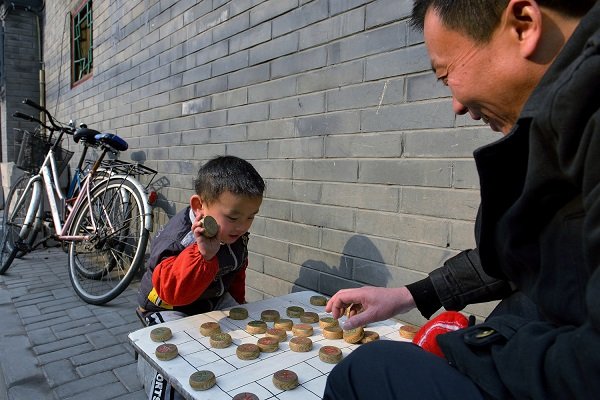
Father and son play a game of Chinese chess
Someone like Matthew Kelly, for example, who has been living and photographing hutong life in Beijing for more than 8 years. He calls himself the ‘people photographer’ as he knows the locals and local lanes or hutongs like the back of his hand. He’ll take you on a trip to find the best subjects and local scenery for you to capture, giving you tips along the way based on his 35 years as a professional photographer.
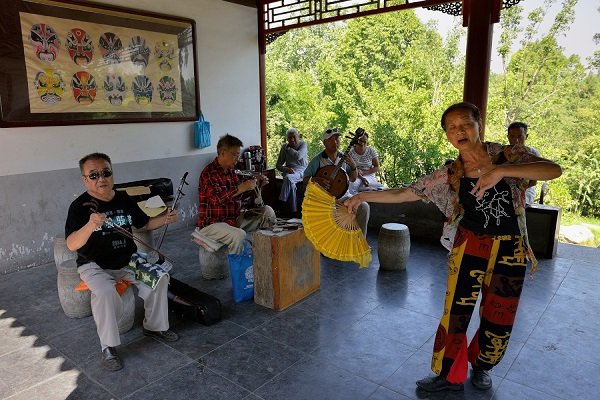
Locals practice opera in Jingshan park near the Forbidden City
The hutong or narrow lanes of old Beijing have existed for over seven hundred years since the Mongol Yuan dynasty (1271 – 1368) chose to install its capital in Beijing. Most of the hutongs in existence today date from the last few centuries. This is where you can witness the daily routines of Chinese life.
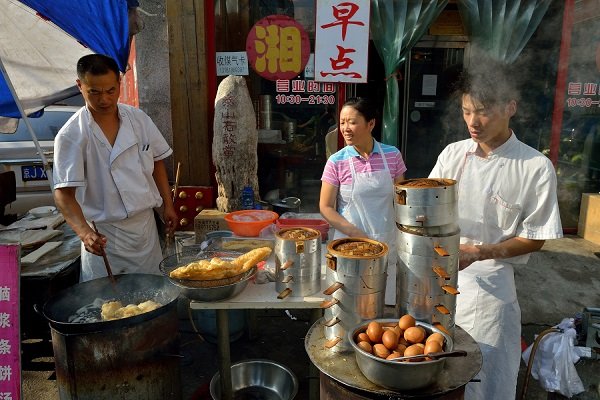
Breakast vendors in the hutongs, a common sight from 4am – 10am
Barbers cut hair out on the streets, women practice traditional dances with fans, men play mahjong or Chinese chess outside their homes, hawkers trundle their carts along the street. Since many people’s hutong houses or siheyuan (courtyards) are so small people live their lives out on the streets, especially during the warmer months from April to October.
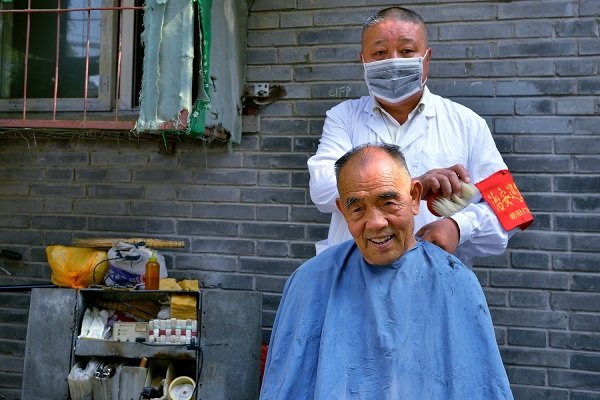
A local street barber at work in the hutongs, not such a common sight as a decade ago
The fascinating local culture is not confined to the hutongs. Matthew can take you to Beijing’s parks where people gather to socialize, dance, sing, play instruments, fly kites, practice martial arts or play games.
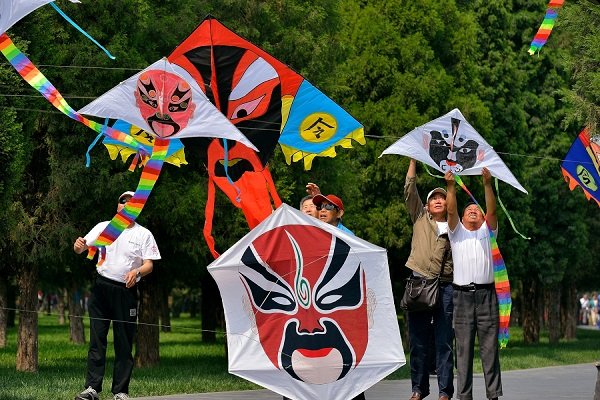
Gentlemen flying traditional kites in Tiantan park
The best parks for this are Jingshan park north of the Forbidden City, Beihai park to the west of Jingshan park, and Tiantan park surrounding the Temple of Heaven.

Posing for photos in traditional dress, a popular thing to do at Beijing’s parks and attractions
To arrange a hutong and / or park photography tour of Beijing just let your itinerary designer know, or if you haven’t started planning an itinerary yet then you can do so here.
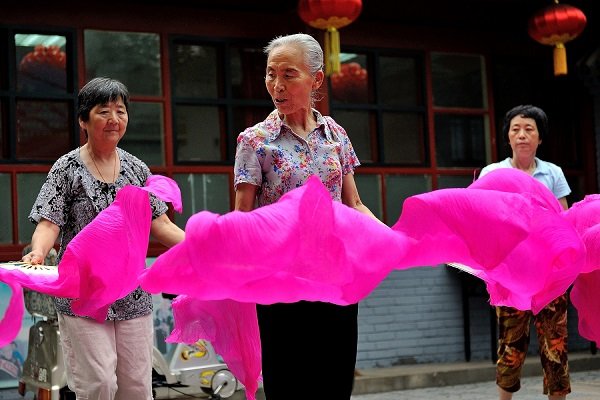
Women practicing fan dancing in the hutongs
All photos are courtesy of Matthew Kelly.
I’m sitting here waiting for the blood moon to peer over the horizon on this day of the Mid-Autumn Festival, also called the Moon Festival. It takes place on the 15th day of the 8th month of the lunar calendar and is a celebration of the roundest and brightest moon of the year. It is a time when families come together to give thanks for the harvest. Even those relatives who cannot physically reunite for the festivities can take comfort by looking at the full round moon and knowing that their family members are doing the same. One of the traditions of the holiday is to make and eat moon cakes. Traditionally round, the moon cakes symbolize unity of family.
There are three legends associated with the Mid-Autumn Festival. Here they are, as told by my older daughter, a 2nd grader at the Chinese American International School in San Francisco, the first Mandarin immersion school in the United States:
Chang’e
Once there were ten suns and they were going to destroy the earth by rising at the same time. Houyi, an archer, was summoned by the emperor and he shot down nine of the suns and saved the earth. For his good deeds, he was offered a gift. Houyi was a greedy man and he wanted to live forever, so he asked for and received an elixir of immortality. Chang’e, Houyi’s wife, knew he was a greedy man and so she stole the elixir and ran away with it. Houyi chased her. As he was catching up to her, she drank it to escape and she was lifted to the moon. You can see her in the moon on the Mid-Autumn Moon Festival.
Jade Rabbit
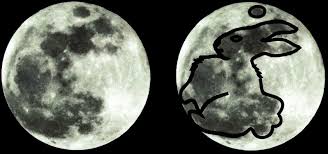
Once there were three moon magicians who came to earth. Changing themselves into men, they pretended they had nothing to eat. They were trying to see who could give them the best food. The fox gave them berries and the monkey gave them other fruits. The rabbit had nothing to give, so he gave himself. The magicians were so impressed that they took him to the moon to live with them. Sometimes you can see him on the moon. He gives food, ensuring a good harvest. He makes moon cakes and throws them down from the moon for the Mid-Autumn Festival and you can see him up on the moon with Chang’e.
Wu Gang the Woodcutter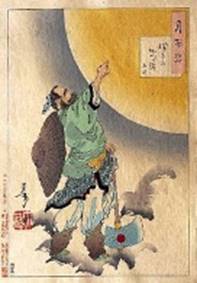
Once there was a selfish woodcutter. He wanted to know the key to eternal life. An old hermit promised to teach him the secret but he had to do everything the hermit told him to do. But the woodcutter was a lazy man so whenever he was asked to do something, he would take a nap under a tree. The hermit revealed his true identity; he was the Jade Emperor. The woodcutter was scared and begged for one last chance. The Jade Emperor said no and took him to the garden on the moon. He said, “You must cut this tree and if you stop for even one minute, you will wither away and die.” The woodcutter thought to himself, “that’s easy because I’m a woodcutter, after all.” He started to cut the tree but when he did, it healed itself right away. And from then on, you can always see him on the moon chopping the tree and filling the air with the scent of cinnamon.
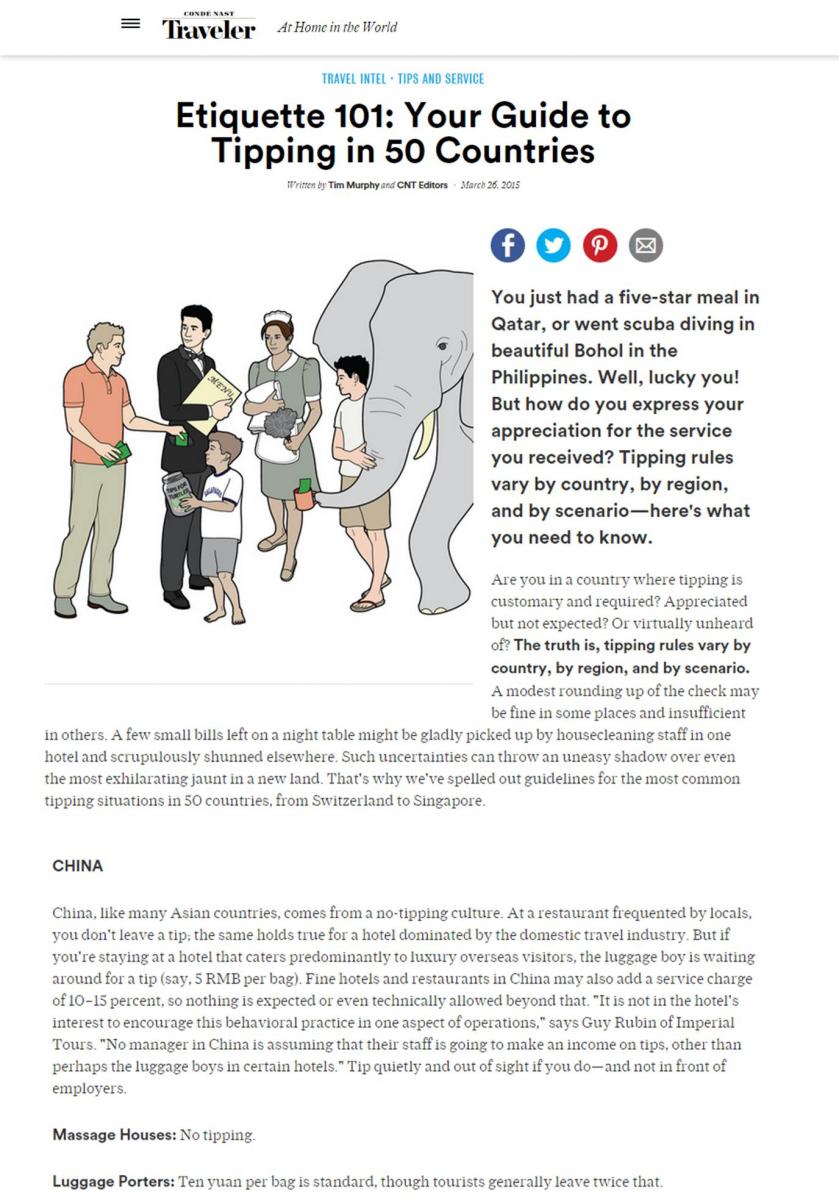
To read about tipping in the other 49 countries, you can read the full article here.
Es jueves en la noche y se está haciendo tarde. Tienes que terminar un itinerario FIT bastante complicado antes de irte de la oficina, así que pides comida china a domicilio y te concentras para terminar el trabajo. El cielo se está oscureciendo del otro lado de la ventana cuando de repente se ve un destello cegador de luz y un platillo volador desciende en picada desde el firmamento nocturno para sobrevolar hasta detenerse afuera de tu oficina. Sale una plataforma de acero, se abre una puerta y un alienígena rojo y verde se arrastra como un caracol gigante por la plataforma y hasta tu oficina.
“Encontré su agencia en internet cuando iba saliendo del hiperespacio, y me preguntaba si podrían ayudarme con una duda sobre viajes”, explica el alienígena usando una aplicación para traducir. Sorprendido y boquiabierto, no aciertas a decir nada. El alienígena continúa: “Voy en un viaje intergaláctico y sólo tengo 10 días para estar en su planeta. No quiero apresurarme innecesariamente. Tengo a mi esposa e hijos en la parte trasera de la nave y les quiero enseñar lo mejor de la Tierra. Es nuestra primera vez aquí. Mis amigos me dijeron que tanto Italia como China han tenido un impacto enorme en su civilización, así que quería pedirles que me aconsejaran acerca de cuál debería visitar”.
Antes de que puedas decir nada, tu colega responde: “Durante los últimos treinta años Italia ha sido un éxito entre los terrícolas, de manera que la conocemos como la palma de la mano. En cambio, China es un tanto desconocida para nosotros, así que le recomendaríamos mucho Italia para sus primeros diez días en nuestro planeta”.
“Esperaba que me dijeran eso”, responde el alienígena con cara de saberlo todo, “porque estaba revisando los datos y vi que la mayoría de las agencias de viajes de lujo venden entre cincuenta y sesenta veces más viajes a Italia que a China. Lo que recomiendan concuerda con los últimos treinta años de sus ventas de viajes. Lo que pasa es que no siento que sea tan sencillo como eso. Después de todo, tanto China como Italia tienen paisajes hermosos, cocinas sorprendentes, gente amigable e impresionantes sitios culturales. Pero conforme volábamos hacia acá, mi esposa también se puso a ver y miró el precio del Cipriani. ¡¿Saben cuánto cuesta una habitación básica?! Mientras que el Península Shanghái, que ganó como el mejor hotel de Virtuoso hace dos años, cobra una fracción de ese precio… También checamos el tamaño promedio de las habitaciones en el Hotel de Russie en Roma y lo comparamos con el del Shangri-la China World Summit Wing en Beijing… ¿saben cuál es la diferencia? Y luego mi hija encontró esta fabulosa compañía que se llama Imperial Tours que hace toda clase de cosas increíbles, como banquetes en la Gran Muralla o un paseo en góndola privada con orquesta en el Lago oeste de Hangzhou. Me preguntó cuánto costaría organizar un banquete en el Coliseo y si las leyes sindicales permitirían una orquesta en una góndola en Venecia. Nos pareció que China sería entre 40 y 50% más barato que Italia con servicios equivalentes, ofreciendo el mismo nivel de calidad y experiencias igual de sorprendentes.
En ese momento suena el timbre y entra el repartidor de comida china, que trae tu pedido. “No pude evitar escuchar su conversación desde afuera”, comienza. Y dirigiéndose a la alienígena, añade: “Hay algo que tiene China e Italia no, ni Francia, ni el Reino Unido, ni Suiza, ni el resto de los destinos más vendidos de esta agencia”.
“¿Qué cosa?”, pregunta el alíen.
“El futuro”, responde.
Luego, volteándose hacia ti y tu colega, continúa: “y hay algo más que quizá no sepan. Según los datos de Virtuoso, un consorcio de viajes de lujo, los agentes de viajes ganan en promedio 2.3 veces más, en ventas a China que en otros destinos porque la gente va por más tiempo y por lo general requieren más servicios cuando están ahí”.
—
Así que la pregunta ahora es: ¿en qué parte de la historia quieres estar? ¿Quieres seguir reflejando lo que ha pasado en el planeta Tierra durante los últimos 30 años o quieres estar en el lado correcto, el del futuro, e invertir en aprender acerca de China?
